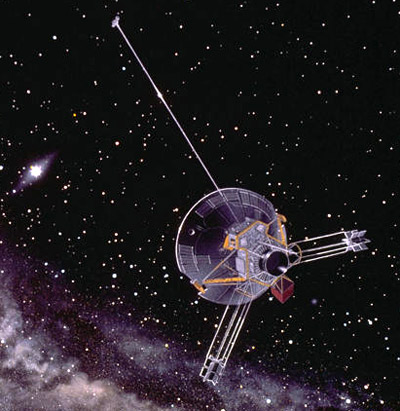Pioneer Anomaly

Different dedicated and non-dedicated missions to test the anomalous acceleration of the Pioneer spacecraft have been investigated.
In this project two plausible mission architectures for the exploration of the outer solar system have been considered that may also be used to test the Pioneer anomaly. First, a class of low-mass low-thrust missions to Pluto, Neptune, or Uranus. For this mission type, the Pioneer anomaly investigation can be performed by radio tracking of the exploration spacecraft. The other mission paradigm considered is that of a micro-spacecraft piggybacked on a large nuclear-reactor powered spacecraft sent to explore Jupiter or Saturn. The small spacecraft would be jettisoned from the mother-craft on the approach to its destination, would use the target planet of the mother-craft for a powered swing-by, and subsequently performs the Pioneer anomaly investigation by radio tracking on a hyperbolic coast arc. For both mission types minimal requirements for the spacecraft design and trajectory have been derived.
For both mission paradigms, the detection of the anomaly is found to be possible during the whole measurement phase, which extends over several years. On board systematics would still limit the precision in the determination of the magnitude of the anomaly to approximately 10%. This does not seem much of an improvement compared to the 15% error margin of the original determination from Pioneer 10 and 11 tracking data. However, by using suitable system design solutions, a non dedicated test would be able to rule out the last candidate on board sources of the anomaly. Furthermore, the simple requirement of a minimal flight angle for the trajectories enables the discrimination between the most plausible classes of candidate models for the anomaly. The attainable acceleration sensitivity of about 8-10 ^11 m/s2 will be insufficient for a precise characterization of the anomaly. In particular, a slope of the anomaly would most likely only be determined to the first order, if at all. This would hardly be sufficient to determine unambiguously the physical law that might underlie the Pioneer anomaly. Hence, the quality of the scientific return of non dedicated missions cannot compete with a dedicated mission for which acceleration sensitivities down to 10^12 m/s2 would be attainable. In view of the ongoing controversial discussion about the origin of the Pioneer anomaly and the extraordinary costs of a dedicated deep-space mission to the outer solar system, however, it seems more appropriate to consider the more modest approach of using a non dedicated mission to verify if the Pioneer anomaly is indeed an indication of a novel physical effect.